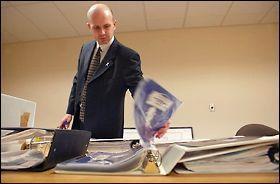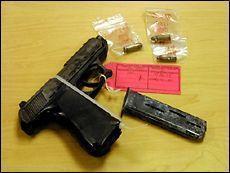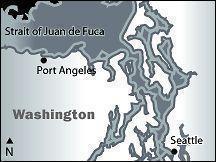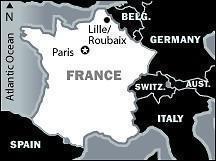 |
 |
|
|||||||
Puzzle Pieces
The State Department's point man on terrorism was still uneasy, though. Michael Sheehan believed the nation hadn't seen the last of men like Ahmed Ressam, the Algerian arrested in Washington state with the makings of a powerful bomb. Ressam had been arrested alone. Was he a hapless true believer with a half-baked plan, or part of a sophisticated network of terrorists already inside the country, ready to strike?
The Justice Department's plan was to bury Ressam with serious offenses, such as conspiracy to commit acts of international terrorism, then squeeze him to inform on higher-ups or other plots.
When he called Fred Humphries in early January, the agent listened intently. There's someone you have to meet, O'Neill said. He may have a lot of answers for you. The man was O'Neill's friend and fellow cigar aficionado, Jean-Louis Bruguière, one of the world's premier terrorist-trackers. Bruguière had called O'Neill from Paris after learning of Ressam's arrest to say he had important intelligence about the captive's activities and connections in Montreal. Within a week, Humphries traveled to New York and met Bruguière. Humphries was taken aback at first, finding the flamboyant Frenchman imperious. For his part, Bruguière wondered why the FBI had assigned this important case to a rookie. But Bruguière trusted O'Neill and extended that trust to Humphries. He began educating the American about Islamic cells in general and the Montreal cell in particular, sharing hundreds of documents. Almost immediately, Humphries was stunned by something Bruguière said: The Frenchman had warned Canadian authorities about the Montreal cell four years earlier, and the Canadians had been watching Ressam and his associates ever since. As Bruguière and Humphries talked, this odd couple of counterterrorism — the fashionable French magistrate and the prematurely bald, ex-paratrooper from Steilacoom, Wash. — grew more comfortable. That evening, O'Neill took them out on the town, requisitioning a SWAT team for security and roaring off in a black SUV, lights flashing and sirens echoing along Manhattan's skyscraper canyons. At Cité, a fashionable steakhouse, the SWAT team checked for danger, then set up a guard post outside while the trio dined in style. Within weeks, Humphries and the U.S. attorney from Seattle, Kate Pflaumer, traveled to Paris for "Terrorism 101," a crash course in Bruguière's nearly two decades of experience. He unraveled the twisted route of a Montreal jihad cell, whose beginnings in Algeria had wound through the battlefields of Bosnia, a burned-out, bullet-ridden house in the French city of Roubaix and a musty flat in Montreal. Over the next several months, Humphries and his colleagues worked to build a solid case against Ressam, while his public defenders, just as diligently, met with their client at the Federal Detention Center in SeaTac to assemble a defense. Humphries traveled nearly 300,000 miles, to France, Algeria, Germany and England, trying to establish Ressam's links to Islamic terrorists. He talked constantly with Bruguière, getting advice, sharing information when he could.
They suspected, but couldn't prove, that Ressam had been trained by bin Laden. They had no idea of his intended target.
Humphries studied the other evidence the Canadians had seized in the Montreal apartment: Wool slacks and black-suede Vittorio Virgili shoes with burn holes, likely caused by drops of acid used in brewing explosives. An illegal 9 mm handgun, wrapped in a Hugo Boss shirt and hidden in a stove. A map of greater Los Angeles. The holes in the slacks, Humphries determined, matched deep burns on Ressam's leg, a key piece of evidence. The agent also noticed something the Canadian police had missed: He unfolded the L.A. map and discovered that someone, presumably Ressam, had drawn circles around the area's three airports.
This, combined with other evidence, led Humphries to conclude this: Seattle was not Ressam's destination of destruction but simply a way station on his way to Southern California. And an airport — perhaps Los Angeles International, one of the nation's busiest — was the likely target.
|
|
|||||||||||||||||||||||||||||||||||||||||||||||||||||||||||||||||||||||||||||||||||||||||||||
|
The Terrorist Within | Reprints seattletimes.com home |




